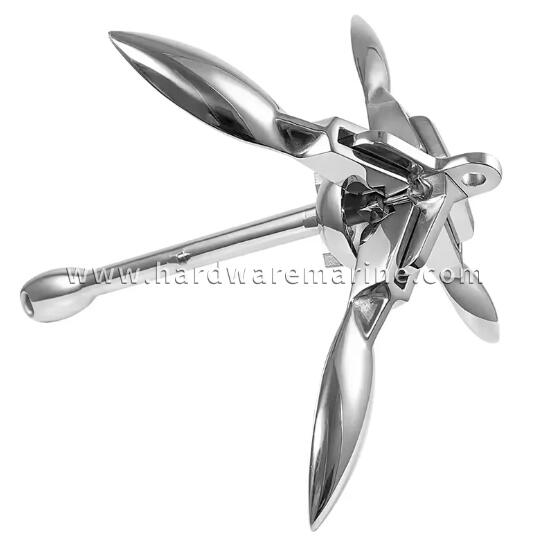How to Choose and Maintain Your 316 Stainless Steel Grapnel Anchor
2024-09-02
Choosing the right anchor for your boat is essential for safe and secure anchoring. The 316 Stainless Steel Grapnel Anchor is a popular choice for boaters due to its durability, versatility, and ease of use. However, selecting the right size and maintaining your grapnel anchor is key to ensuring its longevity and effectiveness. In this blog, we'll guide you through the process of choosing the right 316 stainless steel grapnel anchor for your boat and provide tips on how to maintain it for years of reliable service.
Choosing the Right Size Grapnel Anchor
The effectiveness of an anchor depends largely on selecting the appropriate size for your vessel and the conditions in which you'll be anchoring. Here are some factors to consider when choosing a 316 stainless steel grapnel anchor:
1. Boat Size and Weight: The size and weight of your boat are the most critical factors. Larger and heavier boats require a more substantial anchor to ensure a secure hold. Manufacturers often provide guidelines on the appropriate anchor size based on boat length and weight.
2. Anchoring Conditions: Consider where you'll be anchoring most often. If you frequently anchor in rocky or coral-filled waters, a grapnel anchor is an excellent choice due to its ability to grab onto irregular surfaces. For sandy or muddy bottoms, you may need a larger anchor to achieve the same holding power.
3. Water Depth: The depth of the water where you typically anchor will also influence your anchor choice. In deeper waters, you'll need more anchor line (rode), which requires an anchor that can handle the increased scope.
4. Storage Space: Grapnel anchors are known for their compact and foldable design, making them ideal for boats with limited storage space. Ensure that the anchor you choose can be easily stowed when not in use.
Maintaining Your 316 Stainless Steel Grapnel Anchor
Proper maintenance of your grapnel anchor is essential to ensure its longevity and reliable performance. Here are some maintenance tips:
1. Regular Cleaning: After each use, especially in saltwater, rinse your anchor with fresh water to remove any salt, sand, or debris. This helps prevent corrosion and keeps the anchor in good condition.
2. Inspect for Damage: Regularly inspect your anchor for any signs of wear or damage. Check the flukes and shank for bending, cracks, or other deformities that could affect performance.
3. Lubricate Moving Parts: If your grapnel anchor has moving parts, such as a folding mechanism, lubricate them periodically to ensure smooth operation. Use a marine-grade lubricant to protect against corrosion.
4. Store Properly: When not in use, store your anchor in a dry, protected area. Avoid leaving it exposed to the elements for extended periods, as this can accelerate wear and tear.
5. Monitor the Rode: The anchor rode (the line or chain attached to the anchor) is just as important as the anchor itself. Regularly check the rode for fraying, kinks, or corrosion, and replace it if necessary.
Why Maintenance is Important
Maintaining your 316 stainless steel grapnel anchor is crucial for several reasons:
- Safety: A well-maintained anchor is more reliable, reducing the risk of drifting and ensuring your boat remains securely anchored.
- Longevity: Proper care extends the life of your anchor, protecting your investment and saving you money in the long run.
- Performance: Regular maintenance ensures your anchor performs at its best, providing the holding power you need in various conditions.
Conclusion
The 316 Stainless Steel Grapnel Anchor is a versatile and durable choice for boaters, but selecting the right size and maintaining it properly are key to maximizing its effectiveness. By considering your boat's size, typical anchoring conditions, and ensuring regular maintenance, you can enjoy years of reliable service from your grapnel anchor. Remember, a well-maintained anchor is the foundation of safe and secure boating, giving you peace of mind every time you drop anchor.



